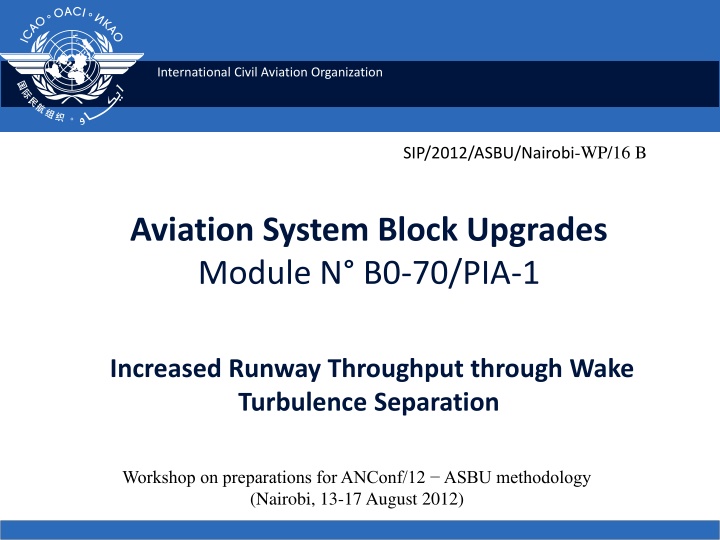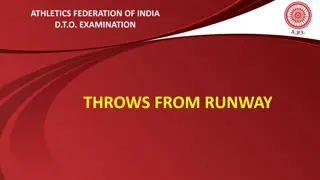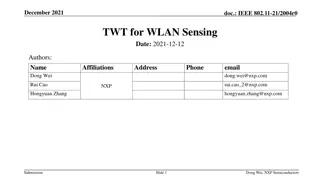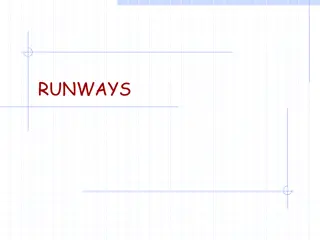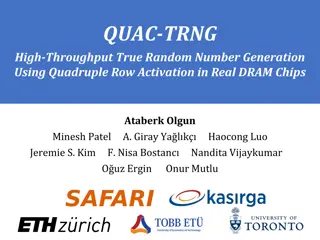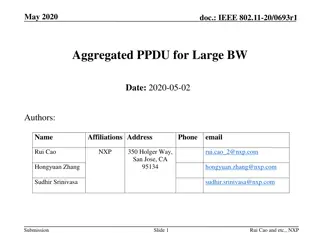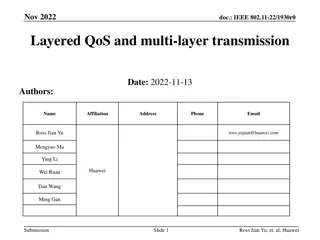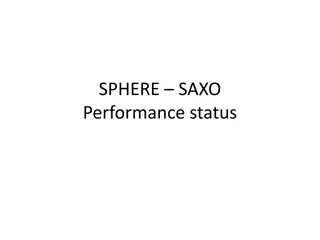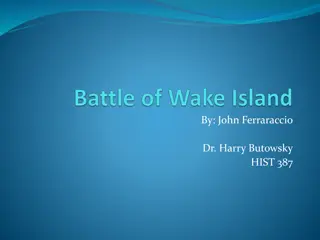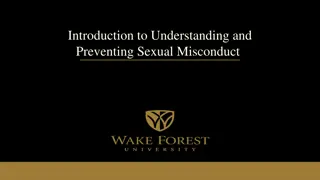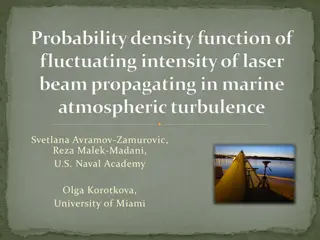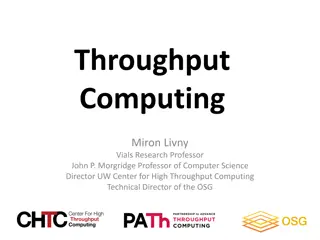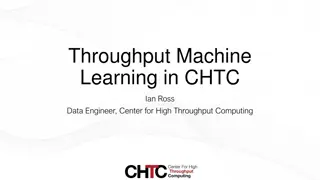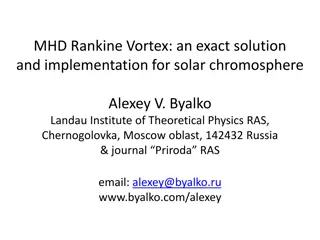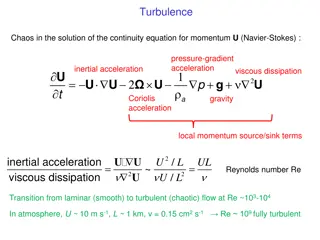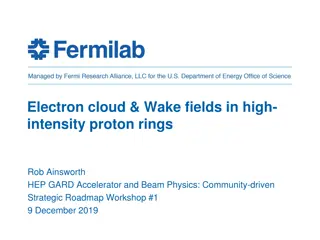Enhanced Runway Throughput via Wake Turbulence Separation Module N.B0-70
This document discusses Module N.B0-70 of the ASBU methodology by ICAO, focusing on increased runway throughput through revised wake turbulence separation standards and procedures. The module addresses the need for more efficient spacing and sequencing of aircraft during approach and en-route operations, as well as enhancing aerodrome arrival and departure capacities. Various changes and developments in wake turbulence mitigation procedures are highlighted to improve operational efficiency and safety.
Uploaded on Sep 28, 2024 | 2 Views
Download Presentation

Please find below an Image/Link to download the presentation.
The content on the website is provided AS IS for your information and personal use only. It may not be sold, licensed, or shared on other websites without obtaining consent from the author.If you encounter any issues during the download, it is possible that the publisher has removed the file from their server.
You are allowed to download the files provided on this website for personal or commercial use, subject to the condition that they are used lawfully. All files are the property of their respective owners.
The content on the website is provided AS IS for your information and personal use only. It may not be sold, licensed, or shared on other websites without obtaining consent from the author.
E N D
Presentation Transcript
International Civil Aviation Organization SIP/2012/ASBU/Nairobi-WP/16 B Aviation System Block Upgrades Module N B0-70/PIA-1 Increased Runway Throughput through Wake Turbulence Separation Workshop on preparations for ANConf/12 ASBU methodology (Nairobi, 13-17 August 2012)
Module N B0-70 Increased Runway Throughput through Wake Turbulence Separation Summary Improved throughput on departure & arrival runways through revision of current ICAO wake turbulence separation minima and procedures. Main Performance Impact KPA-02 Capacity, KPA-06 Flexibility Domain / Flight Phases Arrival and Departure Applicability Considerations - Implementation of re-categorized wake turbulence is procedural. - No changes to automation systems. Global Concept Component(s) CM Conflict Management Global Plan Initiatives () GPI-13- Aerodrome Design; GPI 14 Runway Operations Main Dependencies Nil Global Readiness Checklist Status Standards Readiness 2013 Avionics Availability N/A Ground Systems Availability N/A Procedures Available 2013 Operations Approvals 2013 ICAO SIP 2012- ASBU WORKSHOP 2
Module N B0-70 - Baseline ANSP applied wake mitigation procedures since 1990s 1990s standards are conservative in terms of required aircraft-to-aircraft wake separations: ICAO SIP 2012- ASBU WORKSHOP 3
http://www.skyguide.ch/clear.gif Module N B0-70 Change Brought by the Module Changes to ANSPs applied wake mitigation procedures Element 1 Revision of current ICAO wake separation minima 20 year old wake separation standards still provide safe separation of aircraft No longer provides capacity efficient spacing and sequencing of aircraft in approach and en- route operations Element 2 Increasing Aerodrome Arrival Operational Capacity Prior to 2008, instrument landing operations conducted to an aerodrome s CSPR needed the wake separation spacing equivalent to conducting instrument landing operations to a single runway Variations of the procedure are being developed allowing its application to more aerodrome CSPR with fewer constraints Element 3 Increasing Aerodrome Departure Operational Capacity Wake Independent Departure and Arrival Operation (WIDAO) developed by France and Wake Turbulence Mitigation for Departures (WTMD) project developed by US allows the ANSP to use the inner CSPR for departures independent of the arrivals on the outer CSPR ICAO SIP 2012- ASBU WORKSHOP 4
Module N B0-70 Intended Performance Operational Improvement Capacity - Aerodrome capacity & departure/arrival rates raise as wake categories are increased from 3 to 6. - New procedures will modify current wake mitigation measures of waiting for 2-3 minutes & decrease waiting time required. - Aerodrome capacity & departure rates will increase. - Runway occupancy time will decrease. Flexibility ANSP chose to configure aerodromes to operate on 3 or 6 categories CBA - Benefits the users of the aerodrome s runways. -Air carrier data shows when operating from a major hub operation at a U.S. aerodrome, a gain of two extra departures/hr from the aerodrome s CSPR during the rush has a major beneficial effect in reducing delays in the air carrier s operations. ICAO SIP 2012- ASBU WORKSHOP 5
Module N B0-70 Necessary Procedures (Air & Ground) ANSP will need automation support in providing the wake category assignment of aircrafts to controllers. Implementing Element 1: no changes to air crew s procedures. Impact on use of aerodromes CSPR for arrivals will affect the ANSP procedures for sequencing and segregating aircraft to the CSPR. Implementing Element 2 : no changes to aircrew s procedures. affects the ANSP procedures for sequencing and segregating aircraft to the CSPR Implementing Element 3: no changes to the aircrew s procedures affects the ANSP procedures for departing aircraft on an aerodrome s CSPR & for accomplishing a departure from the aerodrome. ICAO SIP 2012- ASBU WORKSHOP 6
Module N B0-70 Necessary System Capability Avionics No additional technology for the aircraft or additional aircrew certifications is required. Ground systems Some ANSPs may develop a support tool to aid in the application of the new set of 6 category ICAO wake separates. Element 2 and 3 products vary on their dependency to newly applied technology. For WTMD implementation requires wind sensors and automation support to predict crosswind strength and direction and to display that information to the ATC ICAO SIP 2012- ASBU WORKSHOP 7
Module N B0-70 Training and Qualification Requirements Controllers will require training on additional wake categories and separation matrix. The addition of Element 3, WTMD, will require training for controllers on the use of the new tools to monitor and predict cross-winds. Likewise, the qualifications requirements are identified in the regulatory requirements ICAO SIP 2012- ASBU WORKSHOP 8
Module N B0-70 Regulatory/Standardization Needs and Approval Plan (Air & Ground) Regulatory/Standardization: Updates required to current published criteria Approval Plans: To Be Determined following updates to standards. Note: Existing interim activities including those associated with FAA Wake Turbulence Mitigation for Departures (WTMD), and Wake Independent Departure and Arrival Operation (WIDAO) criteria in use at CDG will continue and are expected to be included in the ICAO revised material. ICAO SIP 2012- ASBU WORKSHOP 9
Module N B0-70 Reference Documents Standards Procedures Guidance Materials Approval Documents ICAO Doc 4444, Procedures for Air Navigation Services Air Traffic Management; ICAO Doc 9426, Air Traffic Services Planning Manual; FAA Order 7110.308. ICAO SIP 2012- ASBU WORKSHOP 10
Module N B0-70 Implementation - Benefits and Elements Increased Runway Throughput through Wake Turbulence Separation Benefits - Main Key Performance Areas (KPA) Access Capacity Efficiency Environment Safety KPAs Applicable N Y N N N Elements: 1. Revision of current ICAO wake separation minima 2. Increasing Aerodrome Arrival Operational Capacity 3. Increasing Aerodrome Departure Operational Capacity To be reflected in ANRF ICAO SIP 2012- ASBU WORKSHOP 11
